Keeping up with the latest UK drone laws can be tricky – and with some new law changes coming into effect from 31 December 2020, it's essential to understand what they are and how they will affect your drone flying.
This is because, unlike your regular camera, you can’t just unbox your new drone, charge it up and take it out for its first flight. Drones are a great way to enhance your photography and videography skills, but there are a number of important tasks you need to perform to ensure you're abiding by the latest UK drone laws.
So what are the new laws? Fortunately, for the average amateur drone pilot, little will change immediately. The exception will be for owners of smaller drones like the DJI Mavic Mini and DJI Mini 2.
Previously, these drones didn't need to be registered due to their sub-250g weight, but this requirement has now been extended to all drones with a camera. This means owners of those drones, or any with a camera, will need to register their drone with the Civil Aviation Authority (CAA) and get an Operator ID.
For a more in-depth look at the new EU-wide laws and categories, you can jump to the 'new categories' section using the menu on the left. But first, we're going to look at the basics of what you now need to get before you can legally take off, followed by where you can fly your drone legally and safely in the UK.
- These are the best drones you can buy right now
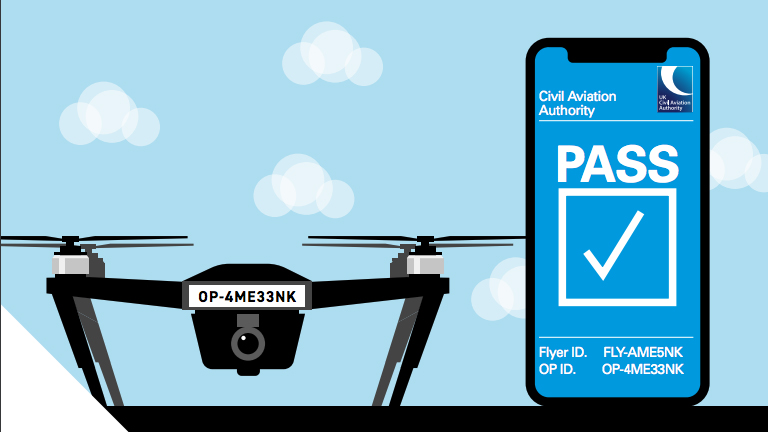
UK drone laws: what you need before flying
- All drones with a camera need an Operator ID, which costs £9 per year
- Most drone owners also need a Flyer ID, which involves an online test
- Pass the online test and your Flyer ID is valid for five years
Nearly all drone owners in the UK will need two IDs before flying outdoors: the Flyer ID (which involves passing a short online test) and an Operator ID (which means registering your drone at a cost of £9 per year).
There are two exceptions. Toy drones that weigh under 250g and do not have a camera will not need either ID. Also, drones that weigh below 250g and have a camera – for example, the DJI Mavic Mini and DJI Mini 2 – need an Operator ID, but do not require a Flyer ID. That said, we'd recommend taking the online test anyway.
In short, you'll likely need both IDs before your drone can take off outdoors. Luckily, the process is pretty quick and easy. Just head to the CAA's 'Register and take the test to fly' page, which will sort you out with both IDs in one place.
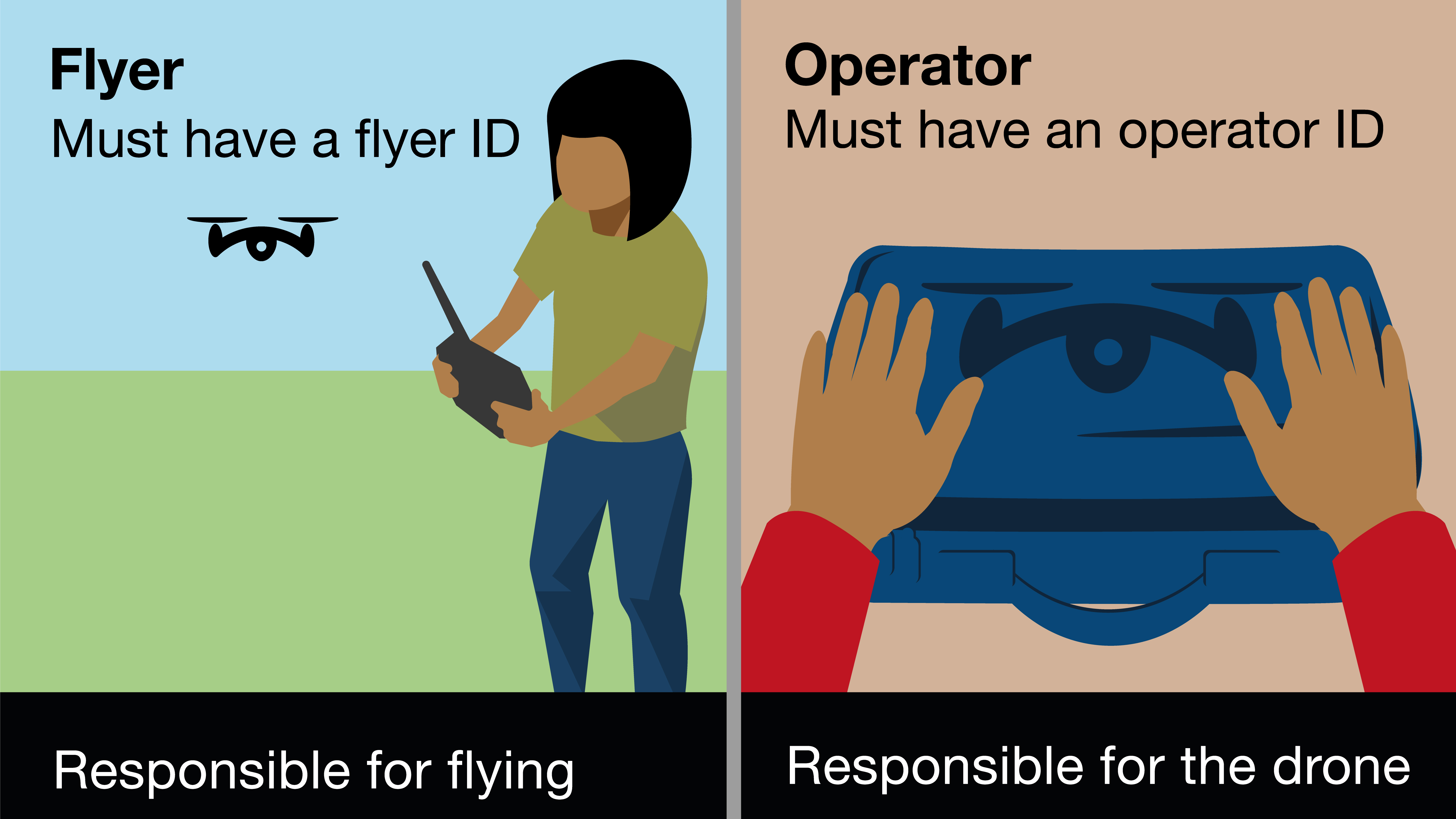
Of course, it makes sense to revise a bit for the multiple-choice quiz, but everything you'll need to know will be in the Drone Code. The test now consists of 40 questions (taking around 30 minutes) and to pass you need a score of 30. You can also take the test as many times as you need.
To register a drone and get an Operator ID, you need to be 18 or over. Assuming that's the case, you'll simply need an email address and debit or credit card for the annual fee. All done? Now it's time to brush up on where and how you can fly your drone legally in the UK.
UK drone laws: the flying basics
- Keep your drone in direct line of sight
- Don't fly higher than 120m above ground
- Avoid flying closer than 50m to people, buildings and cars
- Don't fly closer than 150m to buildings and crowds of people
- All drones with a camera need an Operator ID, regardless of weight
The most important basic information to familiarize yourself with is the Drone Code, which clearly outlines what you should and should not do when flying a drone – and also what you need before you take off. In a nutshell, follow this simple guide at all times and you’ll have no problems.
When flying, your drone must always remain in unaided visual line of sight and fly no more than an altitude of 400ft (120m) and a distance of 500m (1640ft). With most drones, you can set these parameters to stop you from exceeding them.
When flying you should never fly closer than 50m (150ft) to people or properties. It’s also recommended that you don’t fly over people. While there is an exception to this for drones that weigh under 250g (like the DJI Mini 2), you should never fly where people have gathered in crowds or groups.
For crowds of people and built-up areas, you should never fly closer than 150m (500ft), which means you can’t legally fly over them.
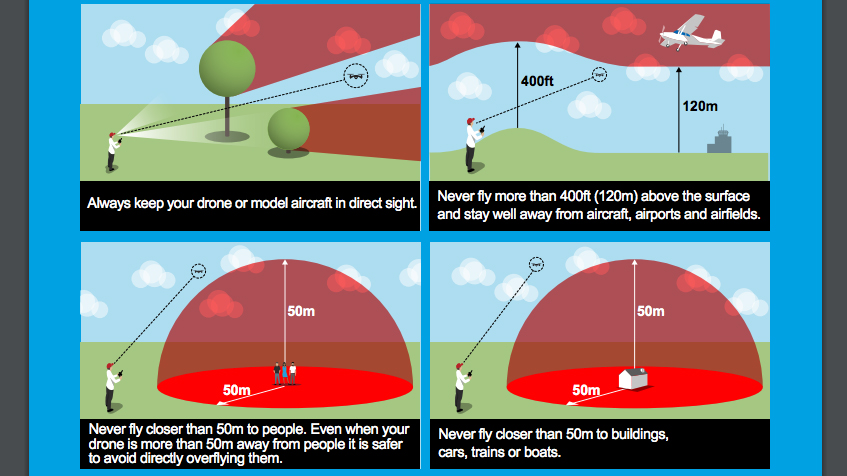
For airports, things are a little different for obvious reasons. Around all aerodromes and airports, there’s an exclusion zone (restricted airspace) of 2-2.5 nautical miles, with a 5km long and 1km wide exclusion at both ends of each runway.
Restricted airspace means that you cannot fly in these places unless you've got permission from the relevant authority. These include around airports, critical infrastructure and military installations. Take all of this into account, though, and you'll be fine.
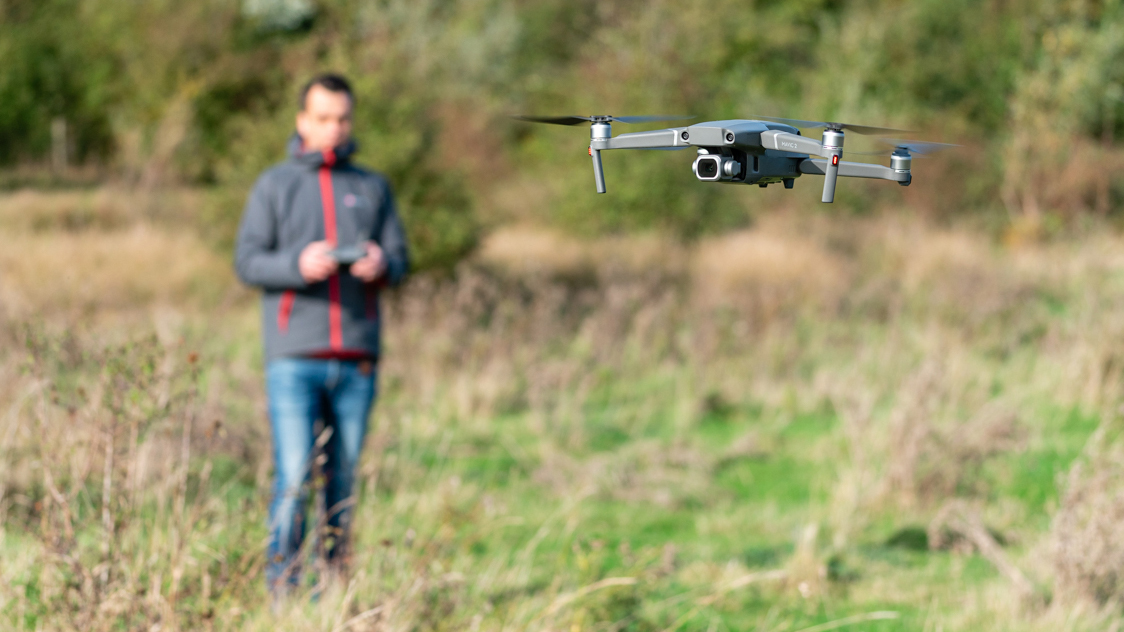
- These are the best DJI drones you can buy right now
UK drone laws: police powers
Police forces across the country have received new powers to land, inspect and seize drones thanks to new legislation – the Traffic Management and Unmanned Aircraft Bill. They also have new stop and search powers around airports, prisons and other restricted locations.
Drone pilots could face on the spot fines of up to £1,000 for offences such as not having or displaying a flyer ID on drones weighing over 249g, not being able to provide proof of permissions and exemptions and, of course, for flying dangerously and/or in restricted locations.
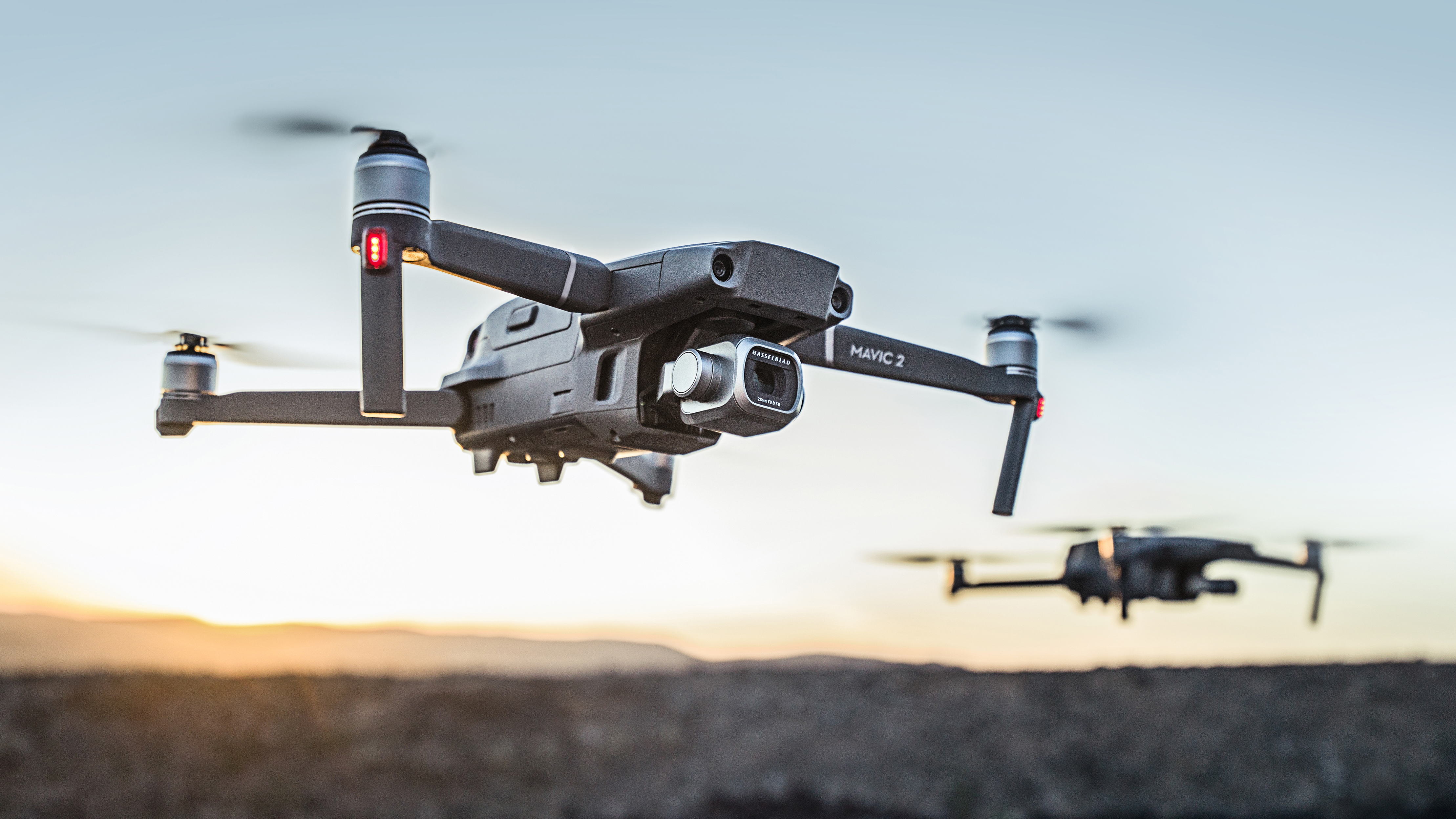
UK drone laws: the new categories
The new UK drone laws, which come into effect from 31 December 2020, are EU-wide and the aim is to simplify things by providing one set of rules and regulations across all member states.
Even though the UK will be leaving its EU transition period on 31 December, the UK signed up to implement all laws passed up until this point.
Under the new rules, there will be no differentiation between 'leisure' and 'commercial' drone flights. Instead, three new categories will take into account to the drone you have and where you intend to fly it – this will ultimately make it possible for amateur drone pilots without a qualification to make money from their aerial stills and video.
These categories – called Open, Specific and Certified – have different requirements in terms of training and also the types of drones you can use. Recreational flying will be covered by the 'Open' category, which is the first one we've covered below.
The rules we’re covering here relate to the UK and EU, but if you’re a resident of the United States or Australia, you can find more information about the drone rules and regulations relevant to you using the links below.
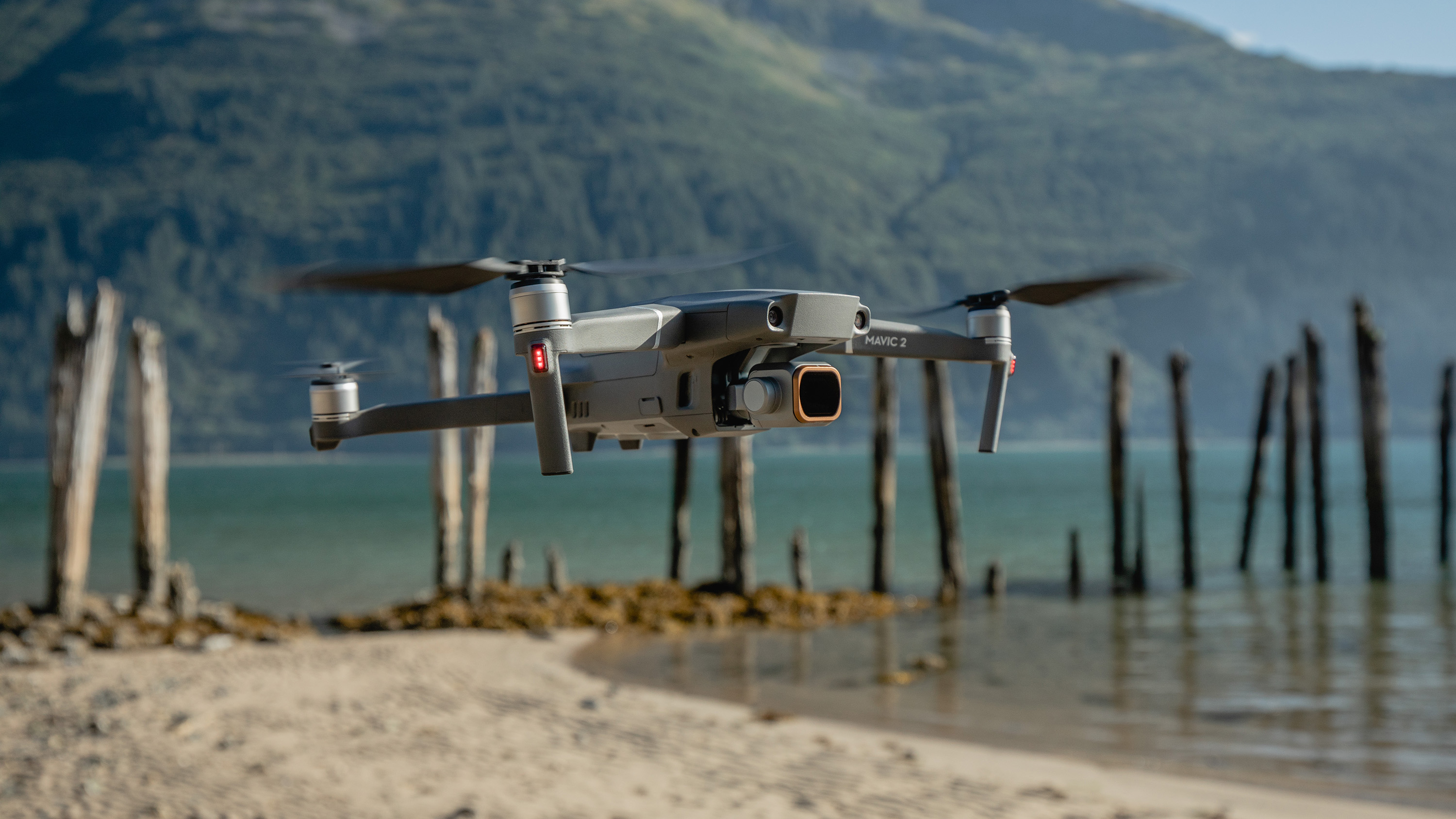
Open Category
The Open Category is for what are considered low-risk flights and will apply to the type of consumer drones the majority of amateur drone pilots use. The category is split into three subsections based on the weight of the drone and the distance it can be flown from people. The subcategories are A1, A2 and A3.
In the A1 category, drones weighing up to 250g can be flown over people but not crowds, as long as the aircraft is 50m away from people. For drones weighing between 250g and 900g, there can be no flight above people unless you hold one of the drone qualifications such as a PfCO, A2CofC or CVC. For current PfCO holders, when they renew their permissions after 31 December the qualification will become an Operational Authorisation.
In the A2 category, lighter weight drones will be able to be flown as close as 30m horizontally from people uninvolved in the drone flight, or as little as 5m when flown in a low-speed mode if you have a qualification.
The A3 category relates to large professional drones weighing up to 25kg and wouldn’t be relevant to people flying consumer drones. This category requires a separation distance from people and buildings of 150m.
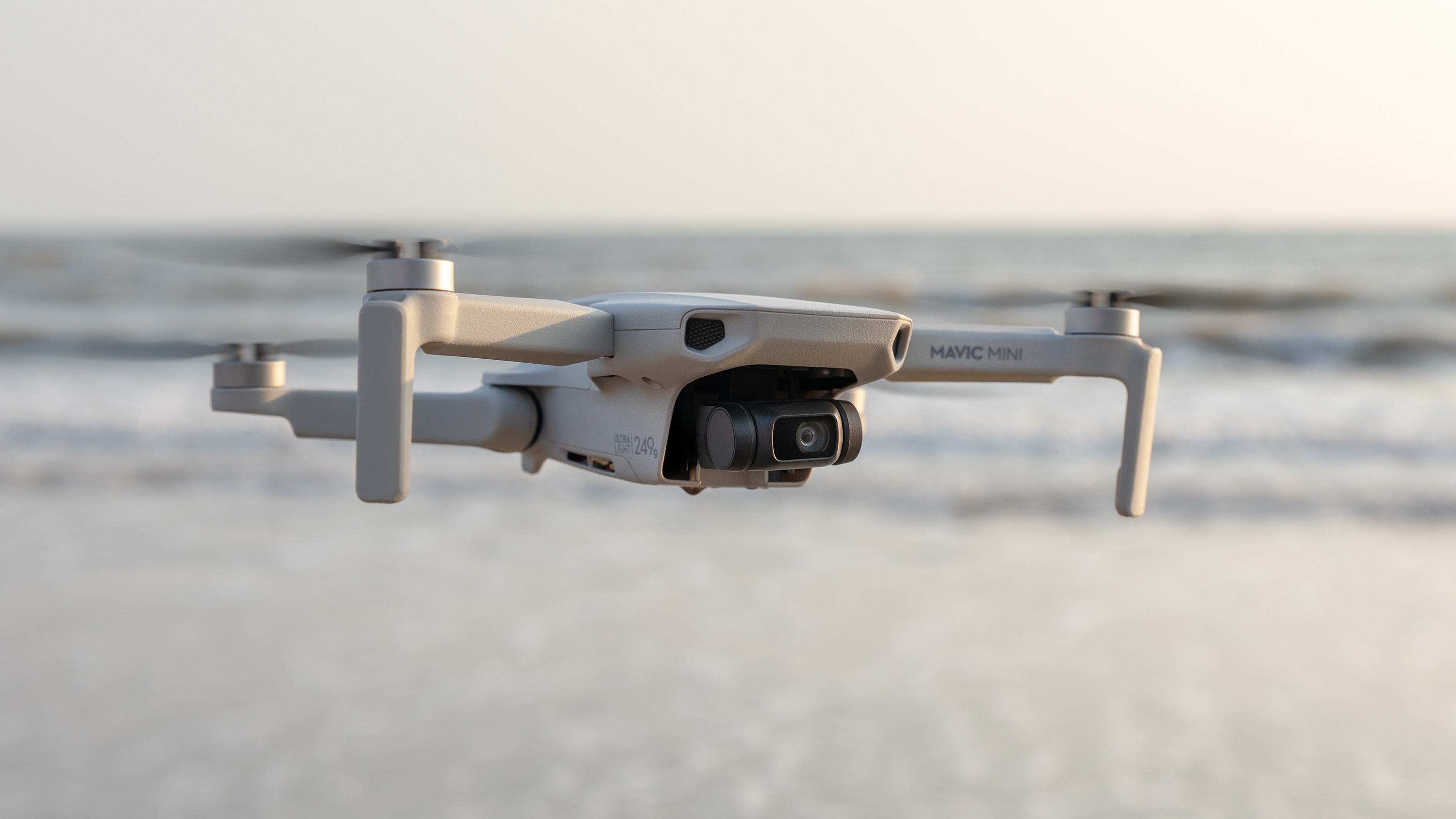
Specific Category
The Specific Category covers drone flights that pose a greater risk than the Open Category and requires a level of planning, like all current commercial operations. The CAA will publish a set of pre-defined scenarios and risk assessments.
Certified Category
The Certified Category relates to complex operations such as those where parcels or even people are carried by the drone. This category is highly specialist and won't be relevant to the vast majority of drone pilots.
New drone classifications
In line with the new flight categories, drones themselves will be classified according to their weight, maximum speed and safety features that minimise the risk of injury to people rather than the current weight-based regime.
The category that will relate to most people is the C2 drone. This will have a maximum take-off mass of less than 4kg, features a low-speed mode with a maximum speed of 6.7mph, has features that minimise injury to people, and has geo-awareness systems among others.
There’s a transition period until 31 December 2022 where legacy drones, which are those available now, depending on weight, can be flown in certain categories.
During the transition period, drones weighing up to 500g can be flown in the A1 transition subcategory with no intentional flight over people. But to fly a new C2 category drone, or a legacy drone weighing up to 2kg in this subcategory, you’ll need a CofC qualification.
When the transition period ends, legacy drones can be flown in the A3 category 150m away from people and buildings, so these drones will become much more limited in their use over time.
UK drone laws: useful tools and apps
- All new DJI drones over 250g include AirSense technology
- This system will help alert you to any aircraft within miles of your drone
- NATS Drone Assist and UAV Forecast are also helpful apps for drone pilots
Flying drones isn’t rocket science, and in many cases having an up-to-date knowledge of the Drone Code and a dose of good old fashioned common sense will keep you, your drone and everyone safe.
But there are now few handy tools to help keep you and everyone safe. For example, DJI has introduced a new alert system into consumer drones called DJI AirSense.
This system uses ADS-B (Automatic Dependent Surveillance-Broadcast) technology, which is used in aeroplanes and helicopters, to provide drone pilots with location data from nearby aircraft fitted with ADS-B transmitters. This flight data is provided through DJI flight apps to alert drone pilots of potential risks to allow them to respond accordingly.
There are also a number of third-party apps that make safe flight planning quick and easy. Here are two apps that are essential for everyone, whether you're flying a drone for fun or commercially. And best of all, they’re both free.
- These are the best DJI drones you can buy right now
UK drone laws: the apps to download
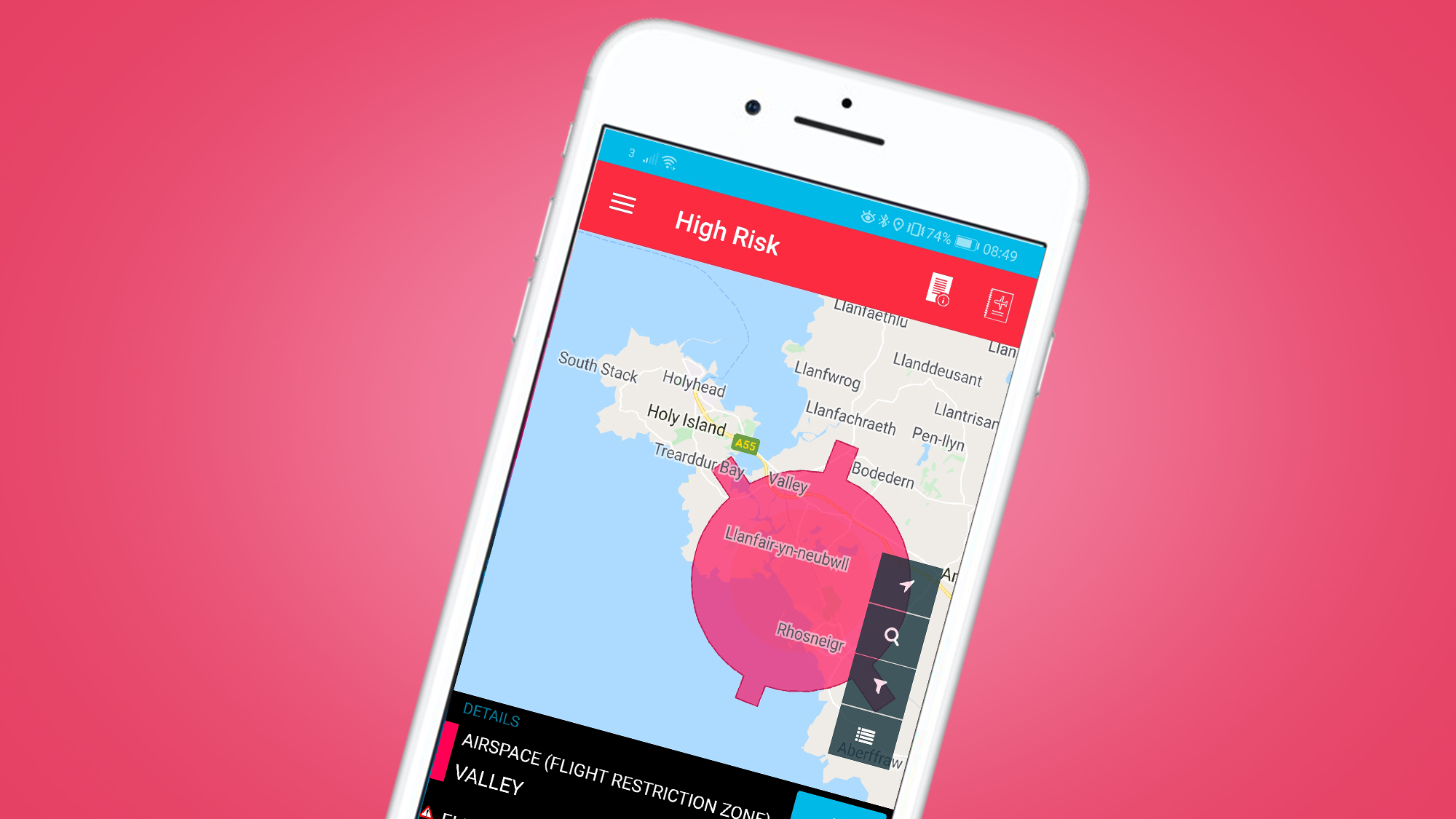
NATS Drone Assist
NATS Drone Assist is an essential app because it allows you to locate your current position using GPS, or to search for a planned location in advance. It shows restricted airspace, NOTAMs (notices to airmen) which are temporary warnings, and rules governing airspace, as well as ground hazards and much more. Basically, this app tells you whether or not you can fly your drone safely and legally.
Download NATS Drone Assist for Android
Download NATS Drone Assist for iOS

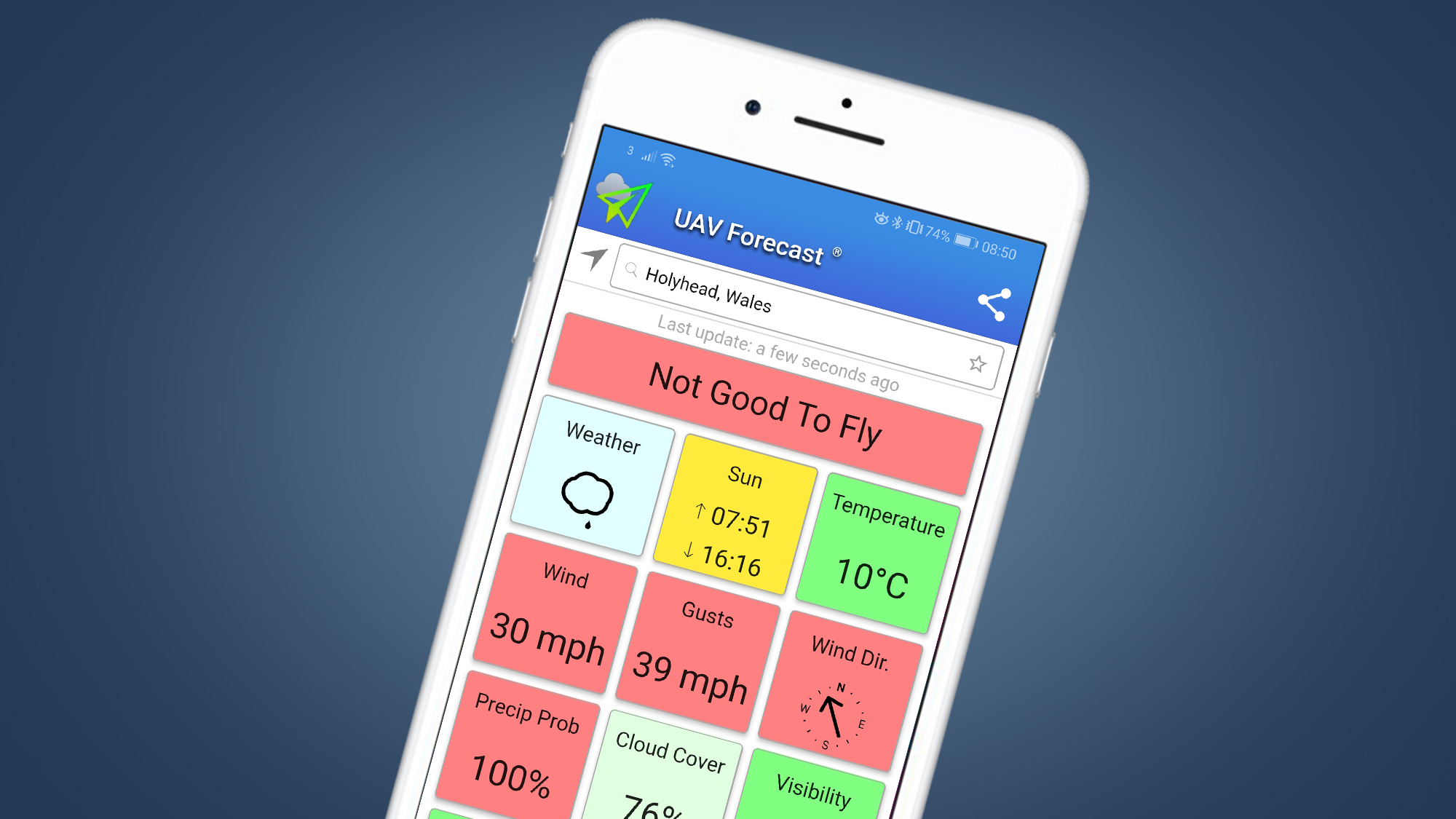
UAV Forecast
UAV Forecast is a weather app aimed directly at drone pilots and gives you a range of weather and other relevant information to help you decide whether it’s safe to fly. Observation of weather conditions on location remains essential, but this allows you to get a good idea of whether or not it’s safe to fly in advance.
Download UAV Forecast for Android

US and Australian drone laws
These drone law guidelines are only applicable to the UK. If you live in the US or Australia, then follow the links below to learn more about the drone laws that are relevant to you:
- These are the best drones in the world right now
from TechRadar - All the latest technology news https://ift.tt/2Mmjq46

